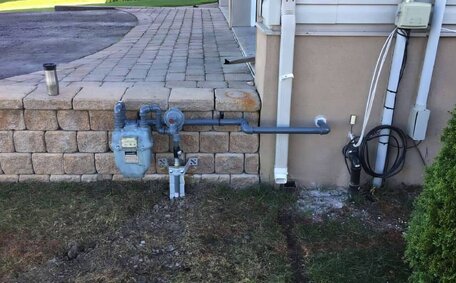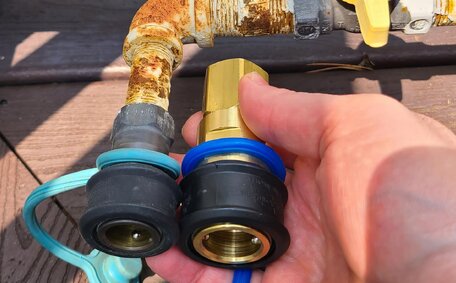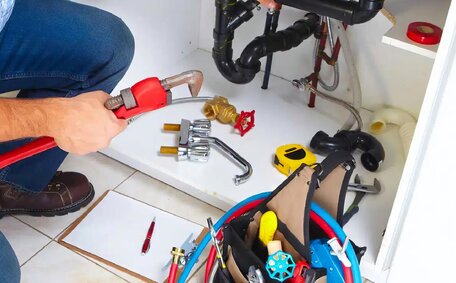Understanding Pipe Relining and How it Extends Pipe Lifespan
Pipe relining rejuvenates existing pipes from the inside out using a trenchless method. A flexible epoxy resin is inserted into the compromised pipe and cured in place, forming a new smooth and durable lining.
This efficient trenchless solution demonstrates the benefits that pipe relining offers, providing fixes to broken pipes without the need for excavations or replacements, hence becoming a superior choice for challenging access areas. Pipe relining significantly enhances durability, Relined pipes offer increased sturdiness and protection against faults such as deterioration, fissures, and root encroachments, which can lead to long-term cost savings.
To understand more about pipe relining in terms of longevity, it’s notable that an epoxy pipe lining is crafted with materials designed to last for 50 years or longer. Opting for this method, homeowners who have used pipe relining can save significant costs than traditional pipe replacement methods, all while providing stronger and more durable pipework. The pipe relining process is carried out with professional diligence, ensuring minimal disruption to yards, structures, and landscaping areas.
Overall, the specialised relining services in your home support the pipes in resisting deterioration, allowing them to function optimally over an extended service life. Pipe relining provides a durable upgrade, seamlessly integrating with existing systems and often surpassing the condition of new pipes.
Typical Lifespan of Relined Pipes
When exploring pipe relining vs traditional pipe replacement to determine its effect on durability and lifespan, it’s notable that relined pipes frequently carry a 50-year warranty, signalling the extended expected lifespan of the repair. Many homeowners ponder, 'How long does pipe relining typically last?' With proper upkeep, relined pipes have the potential to last beyond 50 years.
Relined PVC pipes, treated with the cured-in-place method, have the potential to extend their lifespan to around 100 years. The adaptable epoxy resin moulds to the inner surfaces of the existing sewer line, answering the question of how long does pipe relining last with a smooth, jointless new pipe lining, the process of which can be expedited using hot water steam.
As opposed to traditional methods, the advantages of sewer line repair through drain relining are evidenced by the enhanced durability due to the seamless lining and its defense against corrosion and root invasion. Relined pipes reinforce the existing structure, offering robust solutions that ensure lasting resilience.
Pipe Materials and Relining Methods
Some common pipe materials that often require relining include:
- PVC (polyvinyl chloride) - a durable plastic piping used for sewer and drain lines
- Cast iron pipes - an older material prone to corrosion and cracking over time
- Clay/ceramic - an ageing material susceptible to breaks, leaks and root intrusion
Of the various types pipe relining methods available, two stand out as prime techniques for repairing damaged pipes:
- CIPP (Cured-In-Place Pipe) lining involves inserting a felt tube coated with epoxy resin into damaged pipe. This resin is then hardened in place, a procedure which can be hastened with the application of hot water steam.
- The PIP (Pipe in Pipe) method involves installing a new HDPE (high-density polyethylene) pipe into the old one. Annular space between the pipes is filled with grout for structural stability.
Pipe relining procedures, including CIPP lining, are typically used for pipes with a diameter of at least 4 inches. PIP lining can also be utilised for smaller pipelines, such as water lines.
Both CIPP and PIP methods present trenchless solutions that pipe relining specialists advocate for to bolster and seal ageing pipes, circumventing the extensive process of excavation for replacements. This strategy is recommended for its cost-efficiency and minimal disruption, while it also extends pipe lifespan.
Epoxy Coatings
Epoxy coatings are pivotal in shielding your plumbing pipe from tree root invasions, a common issue in sewer repair that injects resilience into your pipe relining process. A liquid epoxy resin forms a protective barrier inside damaged pipes, sealing cracks and holes while resisting tree roots and corrosion.
Once cured, the epoxy lining becomes rigid, waterproofing the interior and preventing leaks. It also resists wear from friction and abrasion, contributing to structural stability.
Epoxy naturally adheres well to materials such as PVC, concrete, and clay, forming an effective bond. Its density contributes to the long-term durability and strength of a range of pipe materials, including cast iron and clay.
The seamless epoxy coat transforms even severely damaged pipes into renewed, leak-free conduits. By shielding pipe walls from moisture, roots, chemicals and more, it enables the extended 50+ year lifespan typical of relined pipes.
Epoxy pipe relining products, applied by skilled professionals, provide crucial protection for optimal function over time. Their durability supports the enhanced lifespan and strength offered by modern pipe relining techniques.
Cured-In-Place (CIPP)
Cured-In-Place Pipe (CIPP) lining utilises advanced pipe relining technology, serving as a popular and effective trenchless method for rehabilitating damaged pipes. It involves inserting a resin-saturated felt tube into the damaged pipe then curing it in place using hot water or steam.
The hardening of the thermoset resin in the tube forms a tight, jointless lining that seals any damage in the pipeline. The robust CIPP lining, inclusive of water heater connections, presents more benefits over conventional plumbing sewer methodologies by reviving structural stability, flow capacity, and pipeline longevity.
There’s no comparison when it comes to the central advantages of incorporating CIPP pipe relining into your plumbing system, which encompass an effective resolution for blocked pipes:
- No excavation or pipe replacement needed - minimally invasive.
- Suitable for pipes 4 inches and up.
- Conforms to any shape of damaged pipe.
- Long lifespan - 50+ years expected.
- Withstands pressure, abrasion, corrosion.
- Cost-effective vs traditional methods.
CIPP provides comprehensive refurbishment for drain and sewer systems that are otherwise difficult to access and replace. Its seamless barrier and corrosion resistance deliver enhanced pipe strength and longevity.
Pull-In-Place (PIP)
The Pull-In-Place (PIP) method is another trenchless pipe relining process used to rehabilitate smaller pipes down to 1 inch diameter, including water service lines.
It involves pulling or blowing a new seamless HDPE (high density polyethylene) pipe into the old damaged one. The space between the old and new pipes is then pressure-grouted to stabilise the line.
Key benefits of PIP include:
- Suitable for smaller pipes than CIPP.
- New HDPE pipe offers longevity.
- Grout provides structural stability.
- Trenchless method saves time and money.
- Less labour-intensive than full replacement.
While CIPP uses a cured-in-place epoxy resin, PIP pulls in an entirely new physical drain pipe. The outer HDPE pipe shields the inner walls of the old pipe while maintaining flow capacity.
I would highly recommend PIP as it is best suited where pipeline access is very limited, avoiding traditional excavation and disruption. This method renews aged piping with modern materials that resist corrosion and wear. Grouting also fixes pipe separation issues in unstable soil conditions.
Comparing Durability: Relined Pipes vs New Pipes
When it comes to durability, relined pipes can take on or even exceed brand new pipes in many cases. There are several factors that enable relined pipes to be extremely long-lasting:
- The seamless epoxy or PE lining creates a uniform protective layer inside the pipe with no weak points.
- Lining materials like epoxy and PE resist corrosion, abrasion and weathering.
- By maintaining the structural integrity of your old pipes, external steadiness and proximal backing are preserved, preventing potential pipe issues.
While new pipes have advantages in optimal conditions, relined pipes often prove more durable in challenging environments, such as under buildings or within landscaped areas where access is restricted. The seamless lining and retained outer pipe shell makes them highly resilient.
Industry standards suggest that relined pipes, having around twice the lifespan of some new piping materials, offer a notably durable solution for plumbing systems. Correctly installed PVC, concrete and clay pipes relined with epoxy can remain leak and issue-free for 50-100 years.
The only scenarios where new pipe installation could be preferable are when:
- Full pipe realignment/resizing is required
- The existing pipe condition is beyond repair
- Significant upsizing is needed to meet capacity demand
For most repairs, the durability of relined pipes, alongside cost and time savings, makes pipe relining a superior option compared to new pipes.
Best Practices for Maintaining Relined Pipes
Maintaining your pipes’ endurance necessitates occasional upkeep, particularly crucial before proceeding with pipe relining.
Specialists recommend biennial routine drain repair, cleaning, and inspection using a specialist drain camera. This allows any new issues to be detected early before they worsen. It’s prudent to avoid introducing caustic chemical drain cleaners into your drain if it has been relined, as it can impair the epoxy liner over time.
Proper usage of your plumbing system, such as avoiding fats and harsh chemicals in drains, minimises debris buildup and prevents issues. Adhere to best plumbing practices to promptly address drain blockages, reducing stress on pipes.
While relined pipes are highly durable, regular light maintenance allows you to monitor conditions and address pipe repair needs early. This sustains their high corrosion and abrasion resistance to uphold the extended lifespan relining provides.
Environmental and Cost Benefits of Trenchless Relining
Trenchless relining is more environmentally friendly than traditional methods, as it eliminates the need for excavation, preserving your yard’s tranquillity. It eliminates the need to dig trenches through yards, gardens, structures and roads - massively reducing physical landscape disturbance.
With reduced use of heavy machinery and fewer materials needed, trenchless relining is both environmentally friendlier and more cost-effective compared to full pipe replacement.
Trenchless methods also decrease waste generation since the old pipe structure remains intact. No concrete, soil or piping ends up in landfills.
Cost-wise, relining offers significant savings on labour and materials. Engaging certified pipe relining specialists ensures rehabilitation without the high costs of trenching, pipe acquisitions, and extensive landscaping restoration.
While relining has a moderately higher upfront pipe relining cost over patches, the long-term economic benefits outweigh complete pipe replacements. Homeowners can expect to save thousands while benefitting from upgraded, long-lasting drainage systems.
Trenchless relining saves money on pipe refurbishments due to faster completion and decreased disruption. Its environmental sensitivity and cost-effectiveness make it a smart, forward-thinking repair method.
Assessing Suitability and Versatility for Different Situations
Pipe relining is well-suited for repairs in difficult to access areas, including under buildings, beneath landscapes, and in tight spaces. By rehabilitating pipes from the inside out with no excavation required, it prevents the need to jackhammer floors/foundations or damage landscaping.
Relined pipes also prove more durable and resilient than traditional drain line repair, effectively addressing your plumbing issues and protecting the underlying soil of your property. The intact outer pipe structure and seamless inner lining makes them highly stable. Grout injection between linings and host pipes further enhances strength.
Common situations where pipe relining outperforms full replacement include:
- Pipes under buildings or structures
- Sewer/drain lines under driveways, paths and landscaping
- Restricted access areas like fence lines and boundaries
- Multi-story buildings or piping between floors
Customised liner materials and quality workmanship ensure that pipe relining is a versatile and long-term solution. Almost any pipe in need of repair can benefit from trenchless structural reinforcement and sealing.






